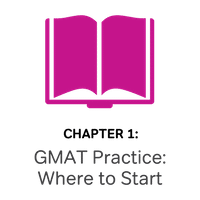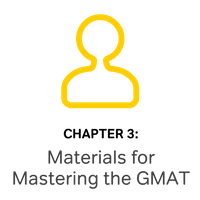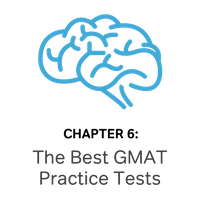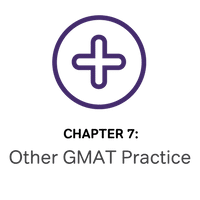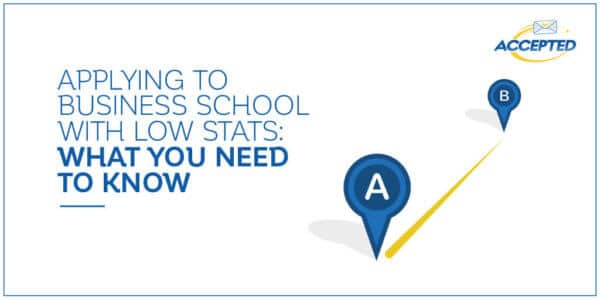Events & Promotions
|
|

GMAT Club Daily Prep
Thank you for using the timer - this advanced tool can estimate your performance and suggest more practice questions. We have subscribed you to Daily Prep Questions via email.
Customized
for You
Track
Your Progress
Practice
Pays
Not interested in getting valuable practice questions and articles delivered to your email? No problem, unsubscribe here.
- Nov 20
07:30 AM PST
-08:30 AM PST
Learn what truly sets the UC Riverside MBA apart and how it helps in your professional growth - Nov 22
11:00 AM IST
-01:00 PM IST
Do RC/MSR passages scare you? e-GMAT is conducting a masterclass to help you learn – Learn effective reading strategies Tackle difficult RC & MSR with confidence Excel in timed test environment - Nov 23
11:00 AM IST
-01:00 PM IST
Attend this free GMAT Algebra Webinar and learn how to master the most challenging Inequalities and Absolute Value problems with ease. - Nov 25
10:00 AM EST
-11:00 AM EST
Prefer video-based learning? The Target Test Prep OnDemand course is a one-of-a-kind video masterclass featuring 400 hours of lecture-style teaching by Scott Woodbury-Stewart, founder of Target Test Prep and one of the most accomplished GMAT instructors.
Kudos
Bookmarks
| FROM Magoosh Blog: Picking Order of Sections on the GMAT |
|
In a recent announcement, GMAC (the folks who create the GMAT) announced an important change to the test. What you have to know hasn’t changed, and what you have to do on test day hasn’t changed—-but the order in which you do these sections doesn’t have to be the same as it has been! Selecting Section Order For decades, the GMAT had a very fixed format: first, the AWA; then the IR; then after an optional break, the Quant section; finally, after a second optional break, the Verbal Section. That was it, no choice. This will change on July 11, 2017. Starting on that day, all GMAT test takers worldwide will have a choice of one of three possible orders. Yes, theoretically there would be a possible 4! = 24 possible permutations, but right now, the GMAT is just allowing three of those. Here are the three orders: Order 1: AWA & IR, first break, Quant, second break, Verbal Order 2: Verbal, first break, Quant, second break, AWA & IR Order 3: Quant, first break, Verbal, second break, AWA & IR Notice that Order #1 is the traditional order, the order fixed on all GMATs before July 11 of this year. Starting on July 11, 2017, you will get to choose one of these three. Making Your Choice So, if you are about to take the GMAT, and you will be faced with this choice, what does this mean? Is there one choice that’s ideal for everyone? Of course not! It very much depends on your preferences, your relative strengths, and your needs. For example, I can do math even when I’m tired and tapped out, but I need to be sharper to do verbal, so I would probably choose order #2. That’s me, but my friend Chris might save Verbal for last, the traditional order, because Verbal is his strong suit. My general advice is that if one section is a huge challenge for you, maybe you should get that section out of the way first: with this in mind, order #2 might be better for many non-native English speakers, while order #3 might be better for American math-phobes. As always, as Socrates found, it’s very hard to improve on the Delphic maxim of “know thyself.” In your practice, experiment with some orders, and see what feels good. One thing I definitely would recommend: get all your thinking or experimenting done long long before you walk into Pearson to take your GMAT. Your preferred GMAT section order is definitely a decision that should be done and set well before the time you sit down to take the GMAT. Preparing for the GMAT The choices of section order should be made long before you walk into your GMAT. Preparing for the GMAT also should involve learning all the content and strategies for all the sections on the test. That’s precisely where Magoosh can help you! Magoosh can help you attain mastery on all four sections of the GMAT! The post Picking Order of Sections on the GMAT appeared first on Magoosh GMAT Blog. |
This Blog post was imported into the forum automatically. We hope you found it helpful. Please use the Kudos button if you did, or please PM/DM me if you found it disruptive and I will take care of it.
-BB
Kudos
Bookmarks
| FROM Magoosh Blog: Act Like a Resume, Think Like an Admissions Officer |
 This post was contributed by our friends at https://gmatclub.com/chat. To write a great resume, you need to be empathetic and get into the mind of the reviewer. Imagine that you are the person reviewing your resume. You’re trying to assess whether you’re qualified, unique and have potential to grow as a professional on paper. With so many candidates and so much material to go through, you don’t start by reading it through from beginning to end. Instead, you spend 10 – 15 seconds skimming the resume and deciding if the candidate looks interesting enough to want to dig deeper. While skipping over a lot of the text, you look for things like:
Jay Mixter is an admissions expert for https://gmatclub.com/chat, the first online social platform for applicants where they can connect with current students, alums, and experts and get a free evaluation of their admissions profile. Prior to his work in management and consulting, he received his MBA from the Tuck School of Business at Dartmouth and his BA in Economics from Tufts University. The post Act Like a Resume, Think Like an Admissions Officer appeared first on Magoosh GMAT Blog. |
This Blog post was imported into the forum automatically. We hope you found it helpful. Please use the Kudos button if you did, or please PM/DM me if you found it disruptive and I will take care of it.
-BB
Kudos
Bookmarks
| FROM Magoosh Blog: How is GMAT Integrated Reasoning Scored? |
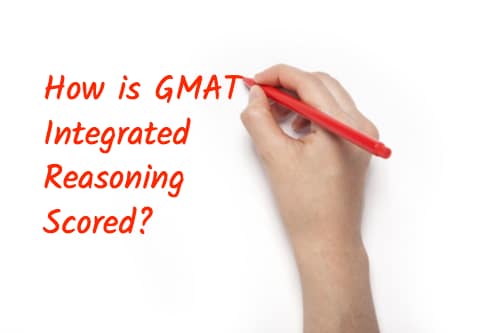 Many students have questions about the GMATs Integrated Reasoning (IR) section. “Is integrated reasoning part of the GMAT score?” Well…yes and no. Your IR score will be submitted to schools along with your verbal and quantitative score. However, the IR score is totally separate from the “total score,” which consists solely of the Q & V sections. But nonetheless, admission committees have started giving considerable attention to integrated reasoning GMAT scores, so it’s important to perform well on each section. Continue reading below for specifics on precisely how the IR section scored. Overview of the GMAT’s Integrated Reasoning Section Fact: The current version of the GMAT features a Verbal Section, a Quantitative Section, a single AWA essay, and the new Integrated Reasoning (IR) section. The sequence of the new test will be: 1) AWA essay = Analysis of Argument, 30 minutes 2) IR section = 12 questions, 30 minutes 3) optional break, up to 5 minutes 4) Q section = 37 questions, 75 minutes 5) optional break, up to 5 minutes 6) V section = 41 questions, 75 minutes Fact: the IR section consists of four question types — a) Graphics Interpretation (GI) b) Two-Part Analysis (2PA) c) Table Analysis (TA) d) Multi-Source Reasoning (MSR) Fact: all four question types will appear on everyone’s IR sections. Fact: the breakdown by question type will differ from one person’s IR section to another person’s only because of the experimental questions. In other words, everyone will have the same breakdown by question type for the questions that actually count toward their score. However, extra experimental questions are added in to this baseline, resulting in different IR section breakdowns for different people. GMAC has revealed neither what that fundamental breakdown is nor how many of the 12 questions will be experimental. Let’s examine a hypothetical scenario just to understand: Let’s say the graded IR questions consist of 2 GIs, 2 2PAs, 2 TAs, and 2 MSRs, for a total of eight (these are my made-up numbers). For everyone taking the test, let’s say those are the eight questions that are graded. The other four questions would be experimental questions, and will be different for different users. Thus, Abe might get an IR section with 3 GIs, 3 2PAs, 3 TAs, and 3 MSRs. Betsy might get an IR section with 2 GIs, 3 2PAs, 3 TAs, and 4 MSRs. Cathy might get an IR section with 2 GIs, 6 2PAs, 2 TAs, and 2 MSRs. In each case, only the baseline eight questions count toward the score, and the others are experiments. (The numbers in this example are purely speculative: we have no idea what GMAC has up their sleeve.) Here’s the kicker, though. As our hypothetical friend Cathy is working through her IR section, she may start to think: “Gee, I’m seeing a lot of 2PA questions! Some of them must be experimental!” Quite true. But the catch is, among those six 2 PA questions, the two that actually count could be the first two, or the last two, or any combination. Those comfortable with combinations will see that there are actually 6C2 = 15 different ways that the two that count could be scrambled among the four experimental questions. As the test taker, even if you do have strong suspicions about which question types the experimental questions were, you will have no way of knowing, as you are working on a particular question, whether it counts or is experimental. Therefore, you have to treat every single question as if it counts, same as on the Q & V sections. What determines the Integrated Reasoning GMAT Score? Fact: the IR section is not computer adaptive. You are randomly assigned 12 questions as a group, and move through that sequence regardless of whether you are getting questions right or wrong. Fact: The GMAT score report will consist of (a) V score, (b) Q score, (c) Total Score (combination of your V & Q scores), (d) AWA score, and (e) IR score. Fact: the IR score will be an integer from 1 to 8. There is no partial credit on the IR section. For example, in a TA question in which there are three dichotomous prompts (e.g. true/false), you must get all three right to get credit for that one question. If you get at least one of the three parts wrong, the whole question is marked wrong. Fact: The number of IR questions you get right will constitute a raw score. The GMAC, using some arcane alchemy known only to them, will convert that raw score into a scaled score (1 – 8), which will be accompanied by percentiles. Notice: Because of the statistical magic GMAC uses in converting raw scores to scaled scores (on IR, Q, & V sections), what may seem to your advantage or disadvantage may not work out that way. For example, the fact that there’s no partial credit is challenging: it makes it harder to earn points on individual questions. BUT, harder for everyone means that lower raw scores are needed to get a higher percentile grade. By contrast, if all the questions are very easy, that means most people will get them right, which means it will be “crowded” at the top, and much harder to place in a high percentile. Therefore, what matters is not how inherently easy or hard the test is—what matters is how well you perform, compared to other test takers. Given your inherent talents, what will maximize your GMAT skills with respect to others taking the GMAT? Sign up for Magoosh, and you will learn all the content and strategy you will need. Editor’s Note: This post was originally published in May 2012 and has been updated for freshness, accuracy, and comprehensiveness. The post How is GMAT Integrated Reasoning Scored? appeared first on Magoosh GMAT Blog. |
This Blog post was imported into the forum automatically. We hope you found it helpful. Please use the Kudos button if you did, or please PM/DM me if you found it disruptive and I will take care of it.
-BB





